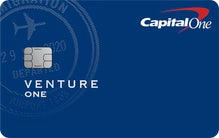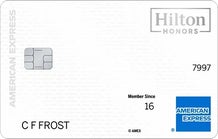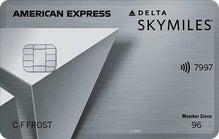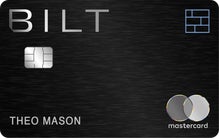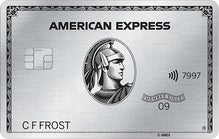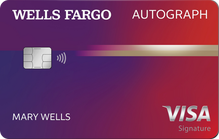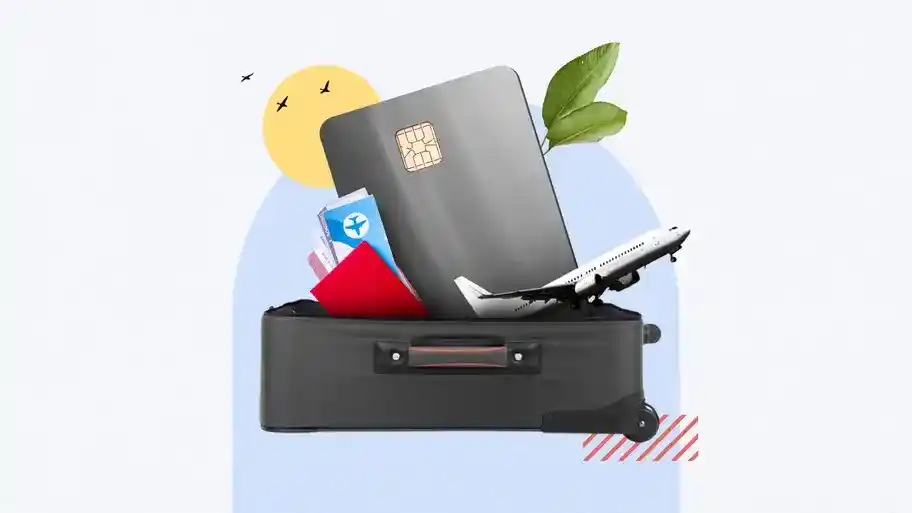Advertiser Disclosure
Bankrate.com is an independent, advertising-supported publisher and comparison service. We are compensated in exchange for the placement of sponsored products and services or by you clicking on certain links posted on our site. Therefore, this compensation may impact what products appear and how, where, and in what order they appear within listing categories, except where prohibited by law for our mortgage, home equity and other home lending products. Other factors, such as our proprietary website rules and whether a product is offered in your area or at your self-selected credit score range, can also impact how and where products appear on this site. While we strive to provide a wide range of offers, Bankrate does not include information about every financial or credit product or service.
Best travel credit cards of April 2025
- • Credit card trends
- • Maximizing rewards
- • Rewards credit cards
- • Travel credit cards
- • Credit cards
- • Personal finance
- • Rewards credit cards
- • Travel credit cards
- • Credit cards
- • Personal finance
Advertiser Disclosure: Bankrate’s editorial team chooses and recommends the credit cards on this page. While we may receive compensation when users apply for cards through this page, our recommendations and card ratings are produced independently without influence by advertising partnerships with issuers.
- Best starter travel card: Chase Sapphire Preferred® Card
- Best for sign-up bonus: Capital One Venture Rewards Credit Card
- Best for practical perks: Capital One Venture X Rewards Credit Card
- Best for foodies: American Express® Gold Card
- Best for low cost: Capital One VentureOne Rewards Credit Card
- Best no-annual-fee hotel card: Hilton Honors American Express Card
- Best for everyday spending: Citi Strata Premier℠ Card
- Best starter airline card: Southwest Rapid Rewards® Plus Credit Card
- Best for companion tickets: Delta SkyMiles® Platinum American Express Card
- Best for fair credit: Credit One Bank Wander® Card
- Best for point values: Chase Sapphire Reserve®
- Best for transfer partners: Bilt Mastercard®
- Best for luxury travel: The Platinum Card® from American Express
- Best for hotel bookings: Wells Fargo Autograph Journey℠ Card
- Best for occasional travelers: Wells Fargo Autograph® Card
How we make money
You have money questions. Bankrate has answers. Our experts have been helping you master your money for over four decades. We continually strive to provide consumers with the expert advice and tools needed to succeed throughout life’s financial journey.
Bankrate follows a strict editorial policy, so you can trust that our content is honest and accurate. Our award-winning editors and reporters create honest and accurate content to help you make the right financial decisions. The content created by our editorial staff is objective, factual, and not influenced by our advertisers.
We’re transparent about how we are able to bring quality content, competitive rates, and useful tools to you by explaining how we make money.
Bankrate.com is an independent, advertising-supported publisher and comparison service. We are compensated in exchange for placement of sponsored products and services, or by you clicking on certain links posted on our site. Therefore, this compensation may impact how, where and in what order products appear within listing categories, except where prohibited by law for our mortgage, home equity and other home lending products. Other factors, such as our own proprietary website rules and whether a product is offered in your area or at your self-selected credit score range, can also impact how and where products appear on this site. While we strive to provide a wide range of offers, Bankrate does not include information about every financial or credit product or service.
Bankrate has partnerships with issuers including, but not limited to, American Express, Bank of America, Capital One, Chase, Citi and Discover.
Compare Bankrate's best travel credit cards of 2025
| Rewards highlights | Welcome offer | Learn more | ||
|---|---|---|---|---|
Limited time offer Earn 100,000 intro bonus points after you spend $5,000 on purchases in the first 3 months from account opening |
| Intro Offer: Earn 100,000 intro bonus points Earn 100,000 bonus points after you spend $5,000 on purchases in the first 3 months from account opening. Regular APR: 19.99% - 28.24% Variable | $95 | |
| Intro Offer: Earn 75,000 miles + $250 Capital One Travel credit Earn 75,000 miles once you spend $4,000 on purchases within the first 3 months of account opening, plus receive a one-time $250 Capital One Travel credit to use in your first cardholder year – that’s equal to $1,000 in travel. Regular APR: 19.99% - 29.24% (Variable) | $95 | ||
| Intro Offer: Earn 75,000 miles Earn 75,000 bonus miles when you spend $4,000 on purchases in the first 3 months from account opening, equal to $750 in travel Regular APR: 19.99% - 29.24% (Variable) | $395 | ||
| Intro Offer: Earn 60,000 points Earn 60,000 Membership Rewards® Points after you spend $6,000 on eligible purchases on your new Card in your first 6 months of Card Membership. Regular APR: See Pay Over Time APR | $325 | ||
| Intro Offer: Earn 20,000 miles Earn a bonus of 20,000 miles once you spend $500 on purchases within 3 months from account opening, equal to $200 in travel Regular APR: 19.24% - 29.24% (Variable) | $0 | ||
| Intro Offer: Earn 70,000 points plus a Free Night Reward Earn 70,000 Hilton Honors Bonus Points plus a Free Night Reward after you spend $2,000 in purchases on the Hilton Honors American Express Card in your first 6 months of Card Membership. Offer Ends 4/29/2025. Regular APR: 19.99%-28.99% Variable | $0 | ||
| Intro Offer: Earn 60,000 bonus ThankYou® Points Earn 60,000 bonus ThankYou® Points after spending $4,000 in the first 3 months of account opening, redeemable for $600 in gift cards or travel rewards at thankyou.com. Regular APR: 20.24% - 28.24% (Variable) | $95 | ||
| Intro Offer: Earn 50,000 bonus points. Earn 50,000 bonus points after spending $1,000 on purchases in the first 3 months from account opening. Regular APR: 20.49% - 27.49% Variable | $69 | ||
| Intro Offer: Earn 60,000 Bonus Miles Earn 60,000 Bonus Miles after you spend $3,000 in eligible purchases on your new Card in your first 6 months of Card Membership. Regular APR: 20.24%-29.24% Variable | $350 | ||
| Intro Offer: N/A Regular APR: 29.49%* Variable | $95 | ||
| Intro Offer: 60,000 bonus points Earn 60,000 bonus points after you spend $5,000 on purchases in the first 3 months from account opening. Regular APR: 20.24% - 28.74% Variable | $550 | ||
| Intro Offer: N/A Regular APR: See Terms | $0 | ||
| Intro Offer: Earn 80,000 points Earn 80,000 Membership Rewards® Points after you spend $8,000 on eligible purchases on your new Card in your first 6 months of Card Membership. Regular APR: See Pay Over Time APR | $695 | ||
| Intro Offer: 60,000 bonus points Earn 60,000 bonus points when you spend $4,000 in purchases in the first 3 months – that’s $600 toward your next trip. Regular APR: 20.24%, 25.24%, or 29.24% Variable APR | $95 | ||
| Intro Offer: 20,000 bonus points Earn 20,000 bonus points when you spend $1,000 in purchases in the first 3 months - that's a $200 cash redemption value. Regular APR: 19.24%, 24.24%, or 29.24% Variable APR | $0 |
Filter by
A FICO score/credit score is used to represent the creditworthiness of a person and may be one indicator to the credit type you are eligible for. However, credit score alone does not guarantee or imply approval for any financial product.
Showing 15 results
Limited time offer
Earn 100,000 intro bonus points
Best starter travel card
Cardholder rating
This rating reflects the average overall score given by real cardholders in response to questions about this card's benefits, rewards, customer service, and data security.
Bankrate score
Our writers, editors and industry experts score credit cards based on a variety of factors including card features, bonus offers and independent research. Credit card issuers have no say or influence on how we rate cards. If you'd like to learn more about how we rank our cards, explore our ranking methodology here.
A FICO score/credit score is used to represent the creditworthiness of a person and may be one indicator to the credit type you are eligible for. However, credit score alone does not guarantee or imply approval for any financial product.
on Chase's secure site
See Rates & FeesIntro offer
Earn 100,000 intro bonus points
Rewards rate
1x - 5x
Annual fee
$95
Regular APR
19.99% - 28.24% Variable
Why you'll like this: It carries solid travel perks and protections, a great mix of bonus categories, valuable points and flexible redemption.
Best for sign-up bonus
Cardholder rating
This rating reflects the average overall score given by real cardholders in response to questions about this card's benefits, rewards, customer service, and data security.
Bankrate score
Our writers, editors and industry experts score credit cards based on a variety of factors including card features, bonus offers and independent research. Credit card issuers have no say or influence on how we rate cards. If you'd like to learn more about how we rank our cards, explore our ranking methodology here.
A FICO score/credit score is used to represent the creditworthiness of a person and may be one indicator to the credit type you are eligible for. However, credit score alone does not guarantee or imply approval for any financial product.
on Capital One's secure site
See Rates & FeesIntro offer
Earn 75,000 miles + $250 Capital One Travel credit
Rewards rate
2 Miles - 5 Miles
Annual fee
$95
Regular APR
19.99% - 29.24% (Variable)
Why you'll like this: Its current sign-up bonus is easily one of the most valuable you can get on a mid-tier travel card.
Best for practical perks
Cardholder rating
This rating reflects the average overall score given by real cardholders in response to questions about this card's benefits, rewards, customer service, and data security.
Bankrate score
Our writers, editors and industry experts score credit cards based on a variety of factors including card features, bonus offers and independent research. Credit card issuers have no say or influence on how we rate cards. If you'd like to learn more about how we rank our cards, explore our ranking methodology here.
A FICO score/credit score is used to represent the creditworthiness of a person and may be one indicator to the credit type you are eligible for. However, credit score alone does not guarantee or imply approval for any financial product.
on Capital One's secure site
See Rates & FeesIntro offer
Earn 75,000 miles
Rewards rate
2 Miles - 10 Miles
Annual fee
$395
Regular APR
19.99% - 29.24% (Variable)
Why you'll like this: It’s likely your most cost-effective path to top-tier perks like airport lounge access, and annual travel credits.
Best for foodies
Cardholder rating
This rating reflects the average overall score given by real cardholders in response to questions about this card's benefits, rewards, customer service, and data security.
Bankrate score
Our writers, editors and industry experts score credit cards based on a variety of factors including card features, bonus offers and independent research. Credit card issuers have no say or influence on how we rate cards. If you'd like to learn more about how we rank our cards, explore our ranking methodology here.
A FICO score/credit score is used to represent the creditworthiness of a person and may be one indicator to the credit type you are eligible for. However, credit score alone does not guarantee or imply approval for any financial product.
on American Express's secure site
See Rates & Fees, Terms ApplyIntro offer
Earn 60,000 points
Rewards rate
1X - 4X
Annual fee
$325
APR
See Pay Over Time APR
Why you'll like this: Food-related perks are the core of this card — from its annual dining and food delivery credits to its competitive dining rewards rates.
Best for low cost
Cardholder rating
This rating reflects the average overall score given by real cardholders in response to questions about this card's benefits, rewards, customer service, and data security.
Bankrate score
Our writers, editors and industry experts score credit cards based on a variety of factors including card features, bonus offers and independent research. Credit card issuers have no say or influence on how we rate cards. If you'd like to learn more about how we rank our cards, explore our ranking methodology here.
A FICO score/credit score is used to represent the creditworthiness of a person and may be one indicator to the credit type you are eligible for. However, credit score alone does not guarantee or imply approval for any financial product.
on Capital One's secure site
See Rates & FeesIntro offer
Earn 20,000 miles
Rewards rate
1.25 Miles - 5 Miles
Annual fee
$0
Regular APR
19.24% - 29.24% (Variable)
Why you'll like this: It’s one of the only no-annual-fee travel cards that lets you transfer miles to airline and hotel partners.
Best no-annual-fee hotel card
Cardholder rating
This rating reflects the average overall score given by real cardholders in response to questions about this card's benefits, rewards, customer service, and data security.
Bankrate score
Our writers, editors and industry experts score credit cards based on a variety of factors including card features, bonus offers and independent research. Credit card issuers have no say or influence on how we rate cards. If you'd like to learn more about how we rank our cards, explore our ranking methodology here.
A FICO score/credit score is used to represent the creditworthiness of a person and may be one indicator to the credit type you are eligible for. However, credit score alone does not guarantee or imply approval for any financial product.
on American Express's secure site
See Rates & Fees, Terms ApplyIntro offer
Earn 70,000 points plus a Free Night Reward
Rewards rate
3X - 7X
Annual fee
$0
APR
19.99%-28.99% Variable
Why you'll like this: It’s remarkably well-rounded thanks to its everyday reward categories, which make it a lucrative card even if you only travel occasionally.
Best for everyday spending
Bankrate score
Our writers, editors and industry experts score credit cards based on a variety of factors including card features, bonus offers and independent research. Credit card issuers have no say or influence on how we rate cards. If you'd like to learn more about how we rank our cards, explore our ranking methodology here.
A FICO score/credit score is used to represent the creditworthiness of a person and may be one indicator to the credit type you are eligible for. However, credit score alone does not guarantee or imply approval for any financial product.
on Citi's secure site
See Rates & FeesIntro offer
Earn 60,000 bonus ThankYou® Points
Rewards rate
1X - 10X
Annual fee
$95
Regular APR
20.24% - 28.24% (Variable)
Why you'll like this: It’s a great option for occasional travelers thanks to its everyday rewards, practical perks and pairing potential.
Best starter airline card
Cardholder rating
This rating reflects the average overall score given by real cardholders in response to questions about this card's benefits, rewards, customer service, and data security.
Bankrate score
Our writers, editors and industry experts score credit cards based on a variety of factors including card features, bonus offers and independent research. Credit card issuers have no say or influence on how we rate cards. If you'd like to learn more about how we rank our cards, explore our ranking methodology here.
A FICO score/credit score is used to represent the creditworthiness of a person and may be one indicator to the credit type you are eligible for. However, credit score alone does not guarantee or imply approval for any financial product.
on Chase's secure site
See Rates & FeesIntro offer
Earn 50,000 bonus points.
Rewards rate
1X - 2X
Annual fee
$69
Regular APR
20.49% - 27.49% Variable
Why you'll like this: Its high-value sign-up bonus and anniversary points make this a low-risk card for occasional flyers.
Best for companion tickets
Cardholder rating
This rating reflects the average overall score given by real cardholders in response to questions about this card's benefits, rewards, customer service, and data security.
Bankrate score
Our writers, editors and industry experts score credit cards based on a variety of factors including card features, bonus offers and independent research. Credit card issuers have no say or influence on how we rate cards. If you'd like to learn more about how we rank our cards, explore our ranking methodology here.
A FICO score/credit score is used to represent the creditworthiness of a person and may be one indicator to the credit type you are eligible for. However, credit score alone does not guarantee or imply approval for any financial product.
on American Express's secure site
See Rates & Fees, Terms ApplyIntro offer
Earn 60,000 Bonus Miles
Rewards rate
1X - 3X
Annual fee
$350
APR
20.24%-29.24% Variable
Why you'll like this: The annual companion certificate is easy to earn and carries enough value to offset the annual fee on its own.
Best for fair credit
Cardholder rating
This rating reflects the average overall score given by real cardholders in response to questions about this card's benefits, rewards, customer service, and data security.
Bankrate score
Our writers, editors and industry experts score credit cards based on a variety of factors including card features, bonus offers and independent research. Credit card issuers have no say or influence on how we rate cards. If you'd like to learn more about how we rank our cards, explore our ranking methodology here.
A FICO score/credit score is used to represent the creditworthiness of a person and may be one indicator to the credit type you are eligible for. However, credit score alone does not guarantee or imply approval for any financial product.
on Credit One Bank's secure site
See Rates & FeesIntro offer
N/A
Rewards rate
1X - 10X
Annual fee
$95
Regular APR
29.49%* Variable
Why you'll like this: It boasts perhaps the highest travel rewards rate you can get with a fair credit score.
Best for point values
Cardholder rating
This rating reflects the average overall score given by real cardholders in response to questions about this card's benefits, rewards, customer service, and data security.
Bankrate score
Our writers, editors and industry experts score credit cards based on a variety of factors including card features, bonus offers and independent research. Credit card issuers have no say or influence on how we rate cards. If you'd like to learn more about how we rank our cards, explore our ranking methodology here.
A FICO score/credit score is used to represent the creditworthiness of a person and may be one indicator to the credit type you are eligible for. However, credit score alone does not guarantee or imply approval for any financial product.
on Chase's secure site
See Rates & FeesIntro offer
60,000 bonus points
Rewards rate
1x - 10x
Annual fee
$550
Regular APR
20.24% - 28.74% Variable
Why you'll like this: Points are worth 50 percent more when you redeem via Chase Travel — the best value you can get on a general travel card without transferring points.
Best for transfer partners
Cardholder rating
This rating reflects the average overall score given by real cardholders in response to questions about this card's benefits, rewards, customer service, and data security.
Bankrate score
Our writers, editors and industry experts score credit cards based on a variety of factors including card features, bonus offers and independent research. Credit card issuers have no say or influence on how we rate cards. If you'd like to learn more about how we rank our cards, explore our ranking methodology here.
A FICO score/credit score is used to represent the creditworthiness of a person and may be one indicator to the credit type you are eligible for. However, credit score alone does not guarantee or imply approval for any financial product.
on Bilt's secure site
See Rates & FeesIntro offer
N/A
Rewards rate
1X Points - 3X Points
Annual fee
$0
Regular APR
See Terms
Why you'll like this: Bonus promotions on the first of each month and excellent transfer partners give this card a unique place in the travel landscape.
Best for luxury travel
Cardholder rating
This rating reflects the average overall score given by real cardholders in response to questions about this card's benefits, rewards, customer service, and data security.
Bankrate score
Our writers, editors and industry experts score credit cards based on a variety of factors including card features, bonus offers and independent research. Credit card issuers have no say or influence on how we rate cards. If you'd like to learn more about how we rank our cards, explore our ranking methodology here.
A FICO score/credit score is used to represent the creditworthiness of a person and may be one indicator to the credit type you are eligible for. However, credit score alone does not guarantee or imply approval for any financial product.
on American Express's secure site
See Rates & Fees, Terms ApplyIntro offer
Earn 80,000 points
Rewards rate
5X
Annual fee
$695
APR
See Pay Over Time APR
Why you'll like this: No other card offers so many annual credits, such comprehensive airport lounge access and such valuable travel protections and hotel privileges.
Best for hotel bookings
Bankrate score
Our writers, editors and industry experts score credit cards based on a variety of factors including card features, bonus offers and independent research. Credit card issuers have no say or influence on how we rate cards. If you'd like to learn more about how we rank our cards, explore our ranking methodology here.
A FICO score/credit score is used to represent the creditworthiness of a person and may be one indicator to the credit type you are eligible for. However, credit score alone does not guarantee or imply approval for any financial product.
on Wells Fargo's secure site
See Rates & FeesIntro offer
60,000 bonus points
Rewards rate
1X - 5X
Annual fee
$95
Regular APR
20.24%, 25.24%, or 29.24% Variable APR
Why you'll like this: It offers a solid mix of reward categories, benefits and travel partners for a reasonable fee.
Best for occasional travelers
Bankrate score
Our writers, editors and industry experts score credit cards based on a variety of factors including card features, bonus offers and independent research. Credit card issuers have no say or influence on how we rate cards. If you'd like to learn more about how we rank our cards, explore our ranking methodology here.
A FICO score/credit score is used to represent the creditworthiness of a person and may be one indicator to the credit type you are eligible for. However, credit score alone does not guarantee or imply approval for any financial product.
on Wells Fargo's secure site
See Rates & FeesIntro offer
20,000 bonus points
Rewards rate
1X - 3X
Annual fee
$0
Regular APR
19.24%, 24.24%, or 29.24% Variable APR
Why you'll like this: It’s a cost-effective choice if you travel occasionally and want a straightforward card for everyday expenses.
Remove a card to add another to compare
Remove a card to add another to compare
Eligibility and benefit level varies by card. Terms, conditions and limitations apply. Please visit AmericanExpress.com/benefitsguide for more details. Underwritten by Amex assurance company.
Researching the best travel credit cards
We thoroughly rate and research the best travel credit cards based on key criteria to help you make confident decisions when choosing your next credit card. Learn more about our methodology below.
What makes a great travel credit card?
Determining what makes a great travel credit card involves weighing the pros and cons of each option and considering which overall package best fits your personal spending and travel habits. Here are some things to consider.
-
A great travel card will earn points or miles that carry high redemption value.
While cash back is easy to understand, points and miles are trickier, since they can potentially be worth more or less depending on how you use them. Our points valuation guide can be a great resource if you want to get a sense of how much a rewards program's points are worth on average and how they compare with those of other programs.
Great example: The Chase Sapphire Preferred® Card, with points worth 25 percent more when you redeem for Chase Travel bookings.
-
Once you understand how much a card's points are worth, consider its bonus categories and how they relate to your spending and travel needs.
A great travel card will earn rewards in your biggest spending categories, making it easier to accumulate points to assist with your travel desires.
For frequent travelers, a card's rewards rate on travel purchases or with the airline or hotel affiliated the card will likely be most important. Ideally, you'll also get some extra value through additional everyday bonus categories.
If you only travel occasionally, you may get more value out of a card that has higher rewards rates on everyday spending than travel. If a card has a high rewards rate in popular categories like groceries, dining or gas, you'll have an easier time earning travel rewards even if you don't actually spend a ton on travel.
Great example: The Citi Strata Premier℠ Card, which earn rewards at a great rate on both travel and everyday spending.
-
Most of the top travel cards charge annual fees, which can be quite high on some premium cards. However, a great travel card will offer enough value via its ongoing rewards and perks to make the annual fee more than worth it.
Premium cards can return value in the form of statement credits for travel bookings and fees, elite benefits and travel perks like lounge access or priority boarding, and annual point bonuses each year on your cardmember anniversary.
We recommend periodically evaluating whether you're squeezing enough value from your card to justify the price tag. Although a card may advertise hundreds of dollars in potential rewards and perk value, you could be leaving money on the table if you can't actually use those benefits.
Great example: Capital One Venture X Rewards Credit Card, which offers a pair of annual perks valuable enough to easily make the card worth it on their own.
-
Another way to offset your annual fee — at least for the first couple years — is with a valuable welcome offer. A great travel card will carry both a valuable bonus and a spending requirement you're confident you can meet.
While we don't typically recommend getting a card just for its bonus, a good offer can help you earn rewards far more quickly than you would via spending in a card's bonus categories. For example, it could take over $33,000 in spending to earn $1,000 worth of travel points on a 3X rewards card, but several cards offer that value via a welcome offer after only a few thousand in spending in your first few months.
Since you can only earn a welcome bonus once on a new card, we recommend getting as much value from it as you can. An ideal time to apply for a card is when it has a limited-time elevated offer, giving you a window to further increase your return. Just make sure you can meet the minimum spending requirement within the specified timeframe and have the means to pay the balance in full.
Check out our best credit card bonuses page to compare offers and see how your potential card measures up
Great example: Capital One Venture Rewards Credit Card, which is currently offering one of its best sign-up bonuses with a reasonable spending requirement.
-
The best general travel cards will be as flexible as you need them to be. Ideally, you'll be able to redeem rewards with multiple airlines and hotels or opt for cash back in addition to travel.
These cards may not have brand-specific perks such as in-flight discounts or extra hotel amenities, but they make up for it with flexible rewards and wider-reaching perks like general travel credits, credits for expedited security screening and comprehensive airport lounge access perks.
The top general travel cards also let you transfer your points or miles to airline and hotel loyalty programs, often at a 1:1 rate. Redeeming with some airlines and hotels can even make your rewards more valuable than they would be if you redeemed with the card issuer.
Getting a general travel card makes the most sense when you have no preferred airline or hotel and want the additional flexibility a general travel card offers.
Great example: Chase Sapphire Preferred® Card, which lets you redeem for travel via Chase Travel, transfer to travel partners or even redeem for cash back at a solid value.
-
Depending on your priorities and preferences, you may be fine having rewards tied to one airline or hotel as long as you can get solid redemption value and loyalty benefits with that travel program.
Co-branded cards tend to offer higher rewards rates on eligible travel purchases in exchange for limiting your reward redemption options to just one airline or hotel program. They may also feature more specific perks associated with the respective hotel or airline, such as free award nights, complimentary elite status or priority boarding — which general-purpose travel cards don’t often carry.
That said, the higher rewards rates and brand-specific perks you'll get on these cards may be worth less than a general travel card's points and perks.
You should consider a co-branded travel card if you often fly or stay with a specific airline or hotel and want to maximize your benefits with that brand. You might also consider our picks for the best airline cards or best hotel cards.
Great example: Hilton Honors American Express® Surpass Card, which offers great perks like a chance at a Free Night Reward and statement credits for Hilton purchases.
-
The best travel credit cards do more than help you rack up rewards toward your next trip — they also offer perks to upgrade your entire travel experience.
Some travelers will be happy with common, easy-to-use perks like trip insurance, concierge services and credits for expedited airport security screening, while others will want premium perks like annual travel credits and airport lounge access.
Top co-branded cards generally offer perks specific to their brand, like elite status benefits, on-property or in-flight benefits, free night awards or flight credits.
Great example: The Platinum Card® from American Express, which offers more value via its various luxury perks than nearly any travel card out there.
The most valuable travel rewards and perks
The value of rewards and perks is one of the biggest factors to consider when choosing a travel card. Many of the best travel cards carry annual fees, so you’ll want to be confident your travel card is giving you back more in value than what it costs annually.
The good news is credit card points and miles are often worth more than cash back since many cards’ points or miles are worth more than 1 cent apiece with the right travel redemption or travel transfer partner. However, many airlines and hotels use dynamic pricing models that continually update airfare and room prices based on factors including where you’re going and when you book. Dynamic pricing can make it hard to know if you’re making the most of your rewards without doing a little math.
Before you redeem, be sure to check the redemption value of your rewards by dividing the cash cost of a plane or hotel booking by its cost in points or miles.
You can also use Bankrate’s latest points and miles valuations to determine if you’re getting a good deal on your redemptions. Bankrate collected data on hundreds of bookings across dozens of airline, hotel and credit card rewards programs and estimated how much each program’s rewards are worth on average. Below, we’ve listed our valuations for the most popular travel rewards programs, plus the general value you can expect from the best travel card perks.
The table below shows Bankrate’s estimated reward redemption value for the loyalty programs of the most popular airlines (in terms of passengers carried).
Keep in mind, however, that these values are averages based on a variety of fare classes, destinations, booking periods and more. For example, while Bankrate estimates Delta SkyMiles carry an average redemption value of around 1.2 cents per mile, they could be worth more or less depending on the details of your booking.
| Rewards program | Bankrate value* | Estimated value of 50,000 points/miles |
|---|---|---|
| American Airlines AAdvantage | 1.0 cents | $500 |
| Delta SkyMiles | 1.2 cents | $600 |
| United Airlines MileagePlus | 0.9 cents | $450 |
| Southwest Rapid Rewards | 1.5 cents | $750 |
*Based on weighted average of median point/mile values across economy and first/business class fares.
Like airline miles, hotel points fluctuate in value. The table below shows Bankrate’s estimated point values for some of the most popular hotel brands.
As you can see, hotel points tend to be worth less than airline and credit card rewards on average, often worth less than 1 cent per point in redemption value. That said, hotel loyalty programs sometimes offer more favorable exchange rates when you transfer rewards from a credit card rewards program. For example, you may be able to turn 1,000 credit card points into 2,000 hotel points (a 2:1 transfer ratio).
| Rewards program | Bankrate value* | Estimated value of 50,000 points/miles |
|---|---|---|
| World of Hyatt | 2.3 cents | $1,150 |
| Hilton Honors | 0.6 cents | $300 |
| IHG One Rewards | 0.7 cents | $350 |
| Marriott Bonvoy | 0.7 cents | $350 |
*Based on median point values across budget, mid-tier and luxury hotel bookings.
Unlike hotel and airline rewards programs, credit card reward programs typically earn points or miles that offer a consistent redemption value when you use them with the issuer. Though the redemption value of your rewards may vary based on how you redeem, each redemption method should offer a consistent baseline value.
Some credit card rewards programs may also allow you to transfer your points or miles to airline and hotel loyalty programs, which could boost their value considerably. For each major credit card rewards program, we estimate a baseline redemption value (assuming you book for travel with the issuer) and our valuation, which averages the program’s best-value transfer partners.
| Rewards program | Baseline value | Bankrate value* | Estimated value of 50,000 points/miles |
|---|---|---|---|
| Bilt Rewards | 1.25 cents | 2.1 cents | $1,050 |
| Citi ThankYou Points (Citi Strata Premier℠ Card) | 1.0 cents | 1.6 cents | $800 |
| Chase Ultimate Rewards (Chase Sapphire Preferred and Ink Business Preferred® Credit Card) | 1.25 cents | 2.0 cents | $1,000 |
| American Express Membership Rewards | 1 cent | 2.0 cents | $1,000 |
| Capital One Miles | 1 cent | 1.7 cents | $850 |
*Based on an average of the issuer’s five highest-value transfer partners (if available).
Determining whether a travel card carries a good selection of perks boils down to gauging whether the perks fit your needs, how they stack up to rival cards’ perks and whether you can reasonably offset the annual fee with the perks’ monetary value. Although some key perks may not have monetary value — like travel insurance and airline or hotel loyalty perks — features like trip cancellation and interruption insurance, trip delay insurance and lost luggage reimbursement are coveted travel card perks for frequent travelers.
But in terms of sheer monetary value, these are some of the most valuable benefits you can get with a travel card:
- Airline companion passes
- Complimentary airport lounge access
- Annual travel credits
- TSA PreCheck, Global Entry or Clear Plus memberships
- Free hotel award nights
Expert advice on using travel credit cards
It’s important to know how to maximize your rewards and perks. Otherwise, a travel card could end up being a money pit. Here are a few pointers from our experts for making the most of your travel card:
- Combine cards to maximize rewards: Knowing how much you spend in different categories and which merchants are eligible for rewards will help you earn more and build an optimized stack of rewards cards. A flat-rate card is often a great starting point to earn the same rate on every purchase you make. But as you build out a rewards strategy, you can incorporate cards with bonus categories to earn even more in your highest spending areas.
- Maximize your rewards value with transfer partners and issuer travel: Travel points and miles often lose value toward non-travel options like cash back, so redeem your rewards for travel through the issuer portal for at least 1 cent per point or mile. However, transferring your rewards to the right airline or hotel partner program is usually worth the extra effort since it could net you even more value.
- Make the most of your travel perks: Travel benefits are one of the main reasons to get a travel card and are often key to making up a card’s annual fee. Be sure to take full advantage of these perks. For example, the right combination of cards for your trip could give you free checked baggage, airport lounge access, priority boarding, in-flight credits, reimburse you for delayed baggage and cover an Uber ride to your hotel. Try to stack as many perks as possible when you travel to give yourself the best possible experience.
- Plan for the sign-up bonus: The best travel cards come with generous welcome offers, but these bonuses may require a high spend in a short timeframe. That’s why it’s important to consider whether the spending requirement fits with your typical spending habits. Just be sure not to overextend yourself just to earn a bonus — interest and fees can easily eat through any value you’d get. Keep an eye out for limited-time offers like extraordinarily high sign-up bonuses, perks with partner services and other reward-earning opportunities to possibly squeeze even more value from your new travel card.
- Track your spending and rewards each account statement: Track your favorite stores’ and services’ merchant category codes (MCCs) to fine-tune your spending habits for maximum rewards. If you notice your expenses changing, this practice may also help you notice whether you need to change which rewards cards you carry.
Travel card news & views
If you want to add a travel credit card to your portfolio, knowing which cards you’ll qualify for and how you can maximize them can help steer your decision.
So how good does your credit need to be to get approved for the best credit cards for travel?
We analyzed data from Bankrate readers who applied for credit cards on our pages in 2024 and we found that, on average, 55.5 percent of users with excellent credit were approved for travel cards on our site. Users with good and fair credit were less successful, with an average approval rate of 22.2 percent and 28 percent, respectively.
Obviously, the better your credit, the more likely you are to get the card you apply for, but other factors like your income, recent credit applications, homeownership status and monthly rental or mortgage payment can affect your application.
But qualifying for a travel card is just the first step.
Travel cards can provide you with outstanding value, but you have to be willing to put in the effort to find the best one for your travel needs and learn the best ways to maximize your rewards.
If you’re wondering how people determine the best strategic uses for their miles and points, consider this Redditor’s advice:
“I rarely use domestic transfer partners because … the redemption value on domestic transfers is usually not that great anyway. I fly economy for domestic trips because premium seats aren't worth it for me on a short flight, so I won't upgrade to business class just to get better redemption value on points. … International airline transfer partners are the way to go with points because they offer the most value. However, be prepared to spend a lot of time and energy searching for the best deals.”
*The quotes and citations included on this page have been verified by our editorial team and are accurate as of the posting date. Be sure to check the issuer's website/terms and conditions for all up to date content. Outlinked content may contain views and opinions that do not reflect the views and opinions of Bankrate.
How Bankrate experts chose their travel cards
Nouri Zarrugh
Senior Editor, Credit Cards
When it comes to earning rewards, I’ve typically stuck with cash back cards, preferring the simplicity of knowing exactly how much my rewards are worth and the ease of redeeming for statement credits. Recently, though, I decided I wanted to travel a bit more, and to my surprise, the card that stood out most was the Capital One Venture X Rewards Credit Card. Its benefits were so valuable, I barely needed to worry about offsetting the cost. It offers a flat rewards rate that makes it easy to earn miles on everything I buy, flexible redemption through Capital One or via transfer to partnering airlines and hotels, and practical perks I know I’ll actually use when I travel.
Benét J. Wilson
Lead writer, Credit cards
I need simplicity in my life and my credit cards, so my pick is the Capital One VentureOne Rewards Credit Card. It makes earning miles a cinch with its unlimited flat rewards rate of 1.25X miles and 5X miles on hotels and rental cars booked through Capital One Travel. Redemption is flexible, too — I can use miles to book travel, get reimbursed for past trips or even transfer miles to more than 15 airline and hotel partners.
Katie Kelton
Senior Writer, Credit Cards
As a frequent Southwest flyer, I chose the Southwest Rapid Rewards Priority Credit Card as my first travel card. I get rewarded for Southwest purchases, hotels, ride sharing and select streaming services, and I usually swipe the card for any purchase that doesn’t earn extra rewards with my cash back card. In other words, points are my priority. The welcome bonus, annual bonus and rewards I’ve earned have covered most of my flights in the last two years. Plus, I get a $75 travel credit and four free upgraded boardings a year.
Ask the experts: Is it a good idea to have multiple travel credit cards?
Thomas Nitzsche
Financial Educator, Debt and Credit
Whether you should have multiple travel credit cards depends on several factors, including your brand affinity, frequency of travel and ability to pay off your cards in full each month. As a credit counselor, I see many people carrying credit card debt at high interest rates while continuing to make charges to the account for the sake of earning rewards. They lose far more than they earn each month. Having more than one travel credit card could make sense for you if you’re able to maximize your earnings by strategizing spending across each card. Just take into account annual fees and actual interest paid.
Stephanie Zito
Contributor, Personal Finance
If you’re up for managing multiple cards and their benefits, then there are definitely big reward payouts to be had. But if the thought of multiple cards is overwhelming, it’s also a good strategy to have one or two more flexible cards and focus on maximizing your earnings and redemptions until it becomes second nature.
Erica Sandberg
Contributor, Credit Cards
Definitely! I currently have two travel credit cards. In addition to the Chase card that I use for my United Airlines purchases, I have the Capital One Venture card for all other airlines. I earn a solid amount of miles on everything I buy with it, so it's an easy go-to for non-travel related expenses.
Have more questions for our credit cards editors? Feel free to send us an email, find us on Facebook, or Tweet us @Bankrate.
Frequently asked questions about travel credit cards
-
A travel credit card is almost always a great fit for frequent travelers or anyone who wants to save money and smooth out their next vacation with rewards and perks. However, the right travel card for you will depend on your travel habits.
Here are some of the people who should get a travel card:
- Frequent travelers
- Travel brand loyalists
- Travel beginners
- Business travelers
- International travelers
- Luxury travelers
-
It’s possible to get a travel credit card with bad or fair credit, but most travel rewards cards are geared toward people with good or excellent credit (a FICO score of at least 670, or a VantageScore of at least 661).
-
Even though many major credit cards earn rewards that don’t expire, you may lose your points and miles if your account closes or isn’t in good standing. However, some co-branded cards’ rewards may expire if you don’t earn or redeem rewards within a certain timeframe (typically 12 to 36 months after the rewards are earned).
Check out our guide to credit card rewards expiration for a thorough breakdown of several popular issuers’ policies.
-
Whether points or miles offer better value will depend on the specific rewards program and how you redeem rewards. One airline loyalty program may earn miles that offer less than 1 cent each in average redemption value while another program’s points may offer close to 3 cents each on average. Similarly, a hotel card’s points may be worth less than half of a credit card issuer’s rewards points. Some programs offer points with only average baseline redemption value but more flexibility and higher value when transferred to a partner airline or hotel.
How we assess the best travel credit cards
When evaluating the best travel cards, we consider a mix of factors, including how cards score in ourproprietary card rating system and whether cards offer features that fit the priorities of a diverse group of cardholders, from earning rewards in popular categories to scoring a large sign-up bonus or high-value perks. Whenever possible, we also feature cards that are available at various credit levels and price points.
We analyzed over 150 of the most popular cards and scored each based on its rewards rate, estimated annual earnings, welcome bonus value, APR, fees, perks and more to determine whether it belonged in this month’s roundup of the best travel cards.
Here’s a quick breakdown of the key factors in our rewards card scoring methodology — our primary scoring category for travel cards — and details we considered when putting together our list of the best travel cards.
-
Value 65%
-
Flexibility 15%
-
Perks 15%
-
Customer experience 5%
-
The primary criteria for a rewards-earning card’s rating is its rewards value. This includes the card’s average rewards rate, estimated annual rewards earnings, sign-up bonus value and reward redemption value.
To estimate a card’s average annual rewards earnings, we first calculate its average rewards rate based on how much it earns in different bonus categories and how closely its categories align with the average person’s spending habits. In other words, we assess whether the card earns rewards at a high rate in the most popular spending categories.
We use consumer spending data from the Bureau of Labor Statistics (BLS) to get a reliable third-party measure of people’s spending habits. The most recent BLS data estimates average total spending in 2023 was $77,280 per consumer. We then narrow our focus to which purchases are likely to be put on a credit card and earn rewards, subtracting expenditures like housing, vehicle purchases and education. This gives us a total “chargeable” annual spend of around $25,500.
This includes the following spending by category:
- Groceries: $6,000
- Dining out: $3,900
- Entertainment: $2,500
- Gas: $2,400
- Apparel and services: $2,000
Using this data, we assign a weighting to each of a card’s bonus categories. For example, a card’s grocery rewards rate receives a 26 percent weighting based on how much of the average person’s budget is spent on groceries.
We also estimate the redemption value of points or miles from various issuer, airline and hotel rewards programs.
This weighting and rewards valuation allows us to estimate a card’s average annual rewards earnings — how many points or miles you’d earn with a given card if your spending was about average and you used the card for all of your purchases — as well as what those points are worth. We also use point valuations to determine a card’s sign-up bonus value
With these calculations complete, we assign each card a score based on how its average rewards earnings, sign-up bonus value, rewards rate and redemption value stack up against other rewards cards.
The better these values, the higher its score will be, making it more worthy of inclusion in our list and increasing its potential ranking.
-
We also score cards based on how much it costs to keep them in your wallet or carry a balance.
To start, each card is scored based on whether it offers an intro APR and how its ongoing APR compares to the rates available on other rewards cards. However, the latter rating only has a slight influence on the card’s score and whether the card is included in our list, since rewards card users generally try to avoid carrying a balance.
More important to both a card’s score and its inclusion in our list is how its annual fee influences its overall value. We consider a card’s annual fee in two ways — how it ranks relative to the fees you’ll find on other cards in the category and how it impacts a card’s overall rewards value.
Cards with an annual fee will always be at a slight disadvantage in our scoring system since annual fees inherently cut into your rewards value. However, if a card offers terrific value via its ongoing rewards and perks, it can earn a high score and a spot in our list even if it carries a high annual fee. After all, the highest rewards rates and most valuable perks are often found on cards with annual fees.
With this in mind, we rate a card based primarily on how its ongoing rewards value and ongoing perk value (such as annual credits or bonuses) stack up against those of other cards in the category when you subtract annual fees.
That said, we strive to include as many no-annual-fee options in our list as possible since many people would rather not worry about offsetting fees, even if a card carries impressive rewards and perks.
-
Rewards cards may make it easy to earn a lot of points, miles or cash back, but how easy is it to use those rewards? After all, if it takes a ton of effort to redeem rewards or you can only redeem rewards in a couple of ways, a card may be more trouble than it’s worth.
As such, we rate each card’s flexibility based on the restrictions it imposes on earning and redeeming rewards. We factor this rating into a card’s overall score and consider it when deciding on a card’s inclusion in our list.
Flexibility factors include whether a card only allows you to earn a high rewards rate on only a small amount of spending or requires you to meet a certain earning threshold before you can redeem rewards. We also examine whether your points are worth less when you opt for some redemption options over others and whether a card gives you the flexibility to transfer rewards to travel partners.
-
We also score each card’s set of features – its perks and benefits — against five tiers of features to provide a rating.
We break down these tiers as follows:
- Tier 1 includes fewer features than even standard credit cards (for example, an ultra-streamlined card that offers basic utility and next to nothing in the way of ancillary benefits).
- Tier 2 includes the benefits you’d expect on standard Visa or Mastercard credit cards, such as free access to your credit score, car rental insurance and $0 liability for fraudulent charges.
- Tier 3 includes “prime card” or better-than-average card features like cellphone insurance, lost luggage insurance, concierge services and purchase protection.
- Tier 4 includes luxury features such as airport lounge access, elite status with an airline or hotel and credits for expedited security screening membership programs.
- Tier 5 includes the sort of exemplary benefits you’ll find on top-tier luxury cards, such as high-value travel credits, cardholder memberships and other unique and valuable perks.
In evaluating the best cards, we tend to favor cards that offer at least Tier 3 benefits, unless they include other unique features that could make up for less-impressive perks.
And since this list focuses on travel cards, we tend to favor cards that carry travel-centric features like travel insurance, airport lounge access and credits for expedited security screening, instead of more general perks like food delivery credits or shopping discounts.
-
We use primary sources to support our work. Bankrate’s authors, reporters and editors are subject-matter experts who thoroughly fact-check editorial content to ensure the information you’re reading is accurate, timely and relevant.
-
“2023 Allianz Partners Big Book of Travel Data.” IdeaWorksCompany. Accessed on Mar. 5, 2025.
-
“Consumer Expenditures 2023,” U.S. Bureau of Labor Statistics. Accessed on Mar. 5, 2025.
-
* See the online application for details about terms and conditions for these offers. Every reasonable effort has been made to maintain accurate information. However all credit card information is presented without warranty. After you click on the offer you desire you will be directed to the credit card issuer's web site where you can review the terms and conditions for your selected offer.
Editorial Disclosure: Opinions expressed here are the author’s alone, and have not been reviewed or approved by any advertiser. The information, including card rates and fees, is accurate as of the publish date. All products or services are presented without warranty. Check the bank’s website for the most current information.



















